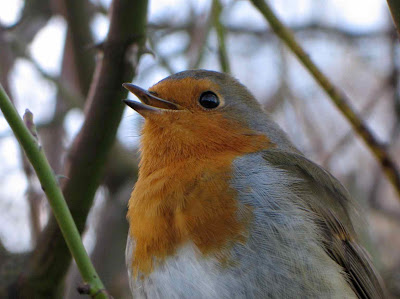There is nothing remarkable about the wildlife at Pearson Park: a pond full of mallards and a couple of moorhens, a flock of pigeons that like to sunbathe on the roof of the ice-cream shop, some grey squirrels, a big grassy space that is regularly walked by a pair of crows. A little bit of extra interest in the winter, when common gulls and Canada and Greylag geese add more noise. However, tucked in a corner of the park there is a lovely wildlife garden. There is a little pond - getting more overgrown with vegetation every year- meadows, plenty of native trees, a hedgerow, a dry stone wall, a herb garden, lots of brambles and nettles. Everything is quite small, it is only a reduced area, but it shows how little is needed to attract wildlife to your doorstep. The meadow attracts grasshoppers (Chorthippus brunneus), butterflies (Ringlet, Gatekeeper, Common Blue), cinnabar moths; the pond teems with mating frogs and newts in March and various dragonflies and damselflies, the trees attract birds and Specked Wood butterflies, the herb garden buzzes with bees and bumblebees all summer. Its a great place to visit all year round.
Here is a selection of photos I've taken in the Wildlife garden.
A very tame robin
Hazel catkins (Corylus avellana)
Mating Common Frogs
Red admiral (Vanessa atalanta) on Blackthorn flowers
Male Common Blue butterfly (Polyommatus icarus)
Male Azure Damselfly (Coenagrion puella)
Cinnabar moth caterpillar (Tyria jacobaea)
Common Field Grasshopper, Chorthippus brunneus
For lots more on the Wildlife Garden check these entries on BugBlog.
If you want to get there, the Wildlife Garden is in the southwestern corner of the park, next to the entrance through Princes Avenue...
View Larger Map

















